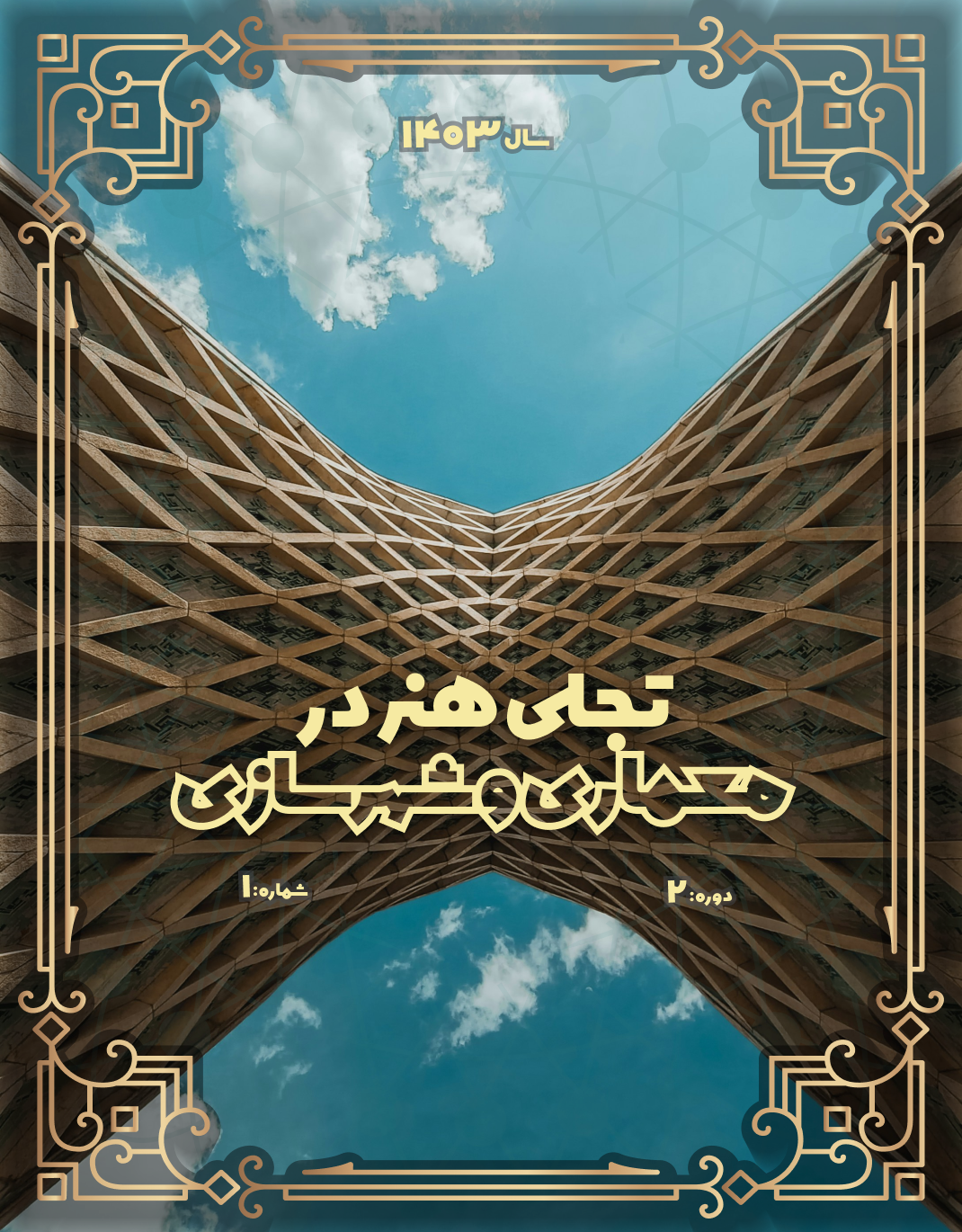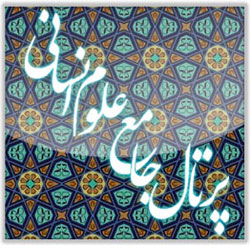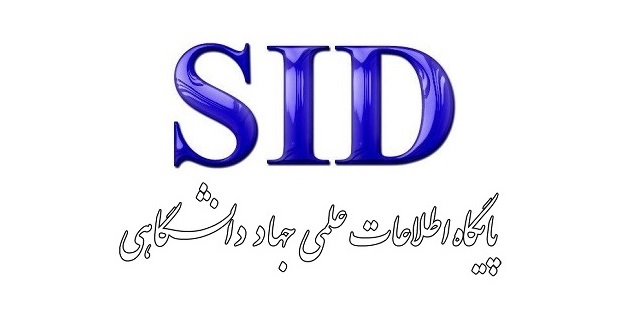اهمیت بازآفرینی نشانههای معماری سنتی در فضاهای محله نیاکی آمل
کلمات کلیدی:
آمل, معماری بومی خانههای سنتی, بازآفرینی شهری, میراث فرهنگی, هویت محلیچکیده
بازآفرینی نشانههای معماری سنتی در فضاهای محله نیاکی آمل به عنوان یک فرآیند ضروری برای حفظ هویت فرهنگی و تاریخی این منطقه شناخته میشود. این تحقیق بر آن است تا اهمیت و چالشهای بازآفرینی نشانههای معماری سنتی را بررسی کند و به تحلیل عوامل مؤثر بر این فرآیند بپردازد. با توجه به تغییرات سریع شهری و تهدیدات ناشی از مدرنیزاسیون، نیاز به رویکردی جامع و پایدار برای حفظ و بازآفرینی این نشانهها بیش از پیش احساس میشود. هدف اصلی این تحقیق، شناسایی و تحلیل نقاط قوت، نقاط ضعف، فرصتها و تهدیدهای مرتبط با بازآفرینی نشانههای معماری سنتی در محله نیاکی آمل است. با در نظر گرفتن اهمیت حفظ هویت فرهنگی و اجتماعی، این مطالعه به دنبال ارائه راهکارهایی برای تقویت و تسهیل فرآیند بازآفرینی است. همچنین، این تحقیق به بررسی تأثیرات اجتماعی و اقتصادی این فرآیند بر ساکنان محله میپردازد. برای تحقیق حاضر، از روش تحقیق کیفی و ترکیبی استفاده میشود. جمعآوری اطلاعات از طریق روشهای میدانی شامل مشاهده مستقیم، مصاحبههای نیمهساختاریافته با ساکنان محله و کارشناسان معماری، و همچنین تحلیل مستندات تاریخی و فرهنگی صورت میگیرد. جامعه آماری شامل 45 نفر از ساکنان، معماران و کارشناسان فرهنگی محلی است که به صورت هدفمند انتخاب شدهاند. تحلیل یافتهها با استفاده از تکنیک SWOT انجام شده است که به شناسایی عوامل مؤثر در بازآفرینی نشانههای معماری سنتی کمک میکند. یافتههای این تحقیق نشان میدهد که نقاط قوت قابل توجهی نظیر حفظ هویت فرهنگی و جذب گردشگران وجود دارد، در حالی که چالشهای جدی مانند نبود آگاهی و مشکلات اقتصادی نیز مطرح است. این مطالعه به شناسایی فرصتهایی برای حمایت از پروژههای بازآفرینی و توسعه گردشگری پایدار میپردازد که میتواند به حفظ و ارتقاء نشانههای معماری سنتی کمک کند. نتیجهگیری این تحقیق بر اهمیت بازآفرینی نشانههای معماری سنتی به عنوان ابزاری برای تقویت هویت فرهنگی و اجتماعی محله نیاکی آمل تأکید دارد. با توجه به پتانسیلهای موجود و نیاز به حمایتهای مالی و آموزشی، این مطالعه پیشنهاداتی برای تسهیل فرآیند بازآفرینی ارائه میدهد. به این ترتیب، میتوان به حفظ و ارتقاء کیفیت زندگی ساکنان و تقویت حس تعلق به مکان در این محله کمک کرد.
دانلودها
مراجع
1. Pourhaqvardi N, Ghasemi M, Norouzi M, Daad Talab J. Identifying Challenges and Analyzing Opportunities for Integrating Bionic Architecture with Traditional Native Architectural Methods (Case Study: Bam City). Bagh Nazar. 2025(142):5-26.
2. Heydari Arjloo T, Hassanpour F, Ghorbani Parham A. Identifying and Prioritizing Features of Traditional Houses in Shiraz Using AHP Method. Urban Futures Studies. 2024(14):4-15.
3. Jafarian R, Mahmoudian A. Traditional Iranian Architecture, Thermal Comfort, and Energy Consumption Balance (Case Study: Architectural Fabric of the Historical City of Sirvan). Ilams Studies. 2024(32):94-119.
4. Emosa H, editor Assessing the sustainability of traditional architecture in Nigeria: Insights from Igala traditional building practices. 2ND INTERNATIONAL RENEWABLE ENERGY CONFERENCE (KATSINA 2024); 2024; Umaru Musa Yar'adua University, Katsina.
5. Xie K, Zhang Y, Han H. Architectural heritage preservation for rural revitalization: Typical case of traditional village Retrofitting in China. Sustainability. 2024;16(2):681.
6. Azari SH. Traditional Architecture of Iran from Past to Present. 2018.
7. Soltani M. Analysis and Examination of Characteristics of Traditional Iranian Houses. Tehran: University of Tehran Press; 2019.
8. Baloochistani M, Delshad Siyahkeli M. Reinventing Quality Patterns in Traditional Architecture of Gilan; Case Study: Houses in Lahijan County. Green Architecture. 2021;7(4):23-34.
9. Ouchizi S, Mahdinejad J. Reinventing Architectural Spaces with a Focus on Enhancing Iranian Identity. Researches in Restoration and Iranian Architecture. 2019;2(4):33-45.
10. Ministry of Cultural Heritage Handicrafts and Tourism. Guide to the Restoration of Historical Works and Traditional Buildings. Tehran: Cultural Heritage Organization Publications; 2016.
11. Rozbehani M. City and Architecture: Challenges and Opportunities for Preserving Traditional Architectural Identity in the Modern World. Tehran: Science and Industry Publications; 2021.
12. Najafi R, Khayri A, editors. Reinventing the Architecture and Old Fabrics of Tehran in Urban Design. Second Conference on Contemporary Civil Engineering, Architecture, and Urbanism; 2019 March 2019; Tabriz, Iran: Tabriz University.
13. Li Y, Chen H, Yu P, Yang L. A review of artificial intelligence in enhancing architectural design efficiency. Applied Sciences. 2025;15(3):1476.
14. Athira SB, Amritha PK, Chithra K, Chkeir A, Bouzidi Y, El Akili Z, et al. Defining and analysing traditional architectural knowledge systems: Components and guiding principles in Indian residential architecture through the lens of expertise Assessment of thermal comfort in the traditional and contemporary houses in Byblos: A comparative study. Indian Journal of Traditional Knowledge (IJTK). 2025;24(5):933-45.
15. Ghouchani M, Taji M. Studying the Role of Open Spaces and the Solid and Void Patterns of Houses and Mosques in Traditional Architecture and Its Reinvention in Contemporary Iran. Environmental Studies of Haft Hasar. 2018;7(26):89-102.
16. Santhamoorthy ST, Jethra H, Patel J. Providing Property Search and Visualization Based on Traditional Architecture. Defensive Publications Series, Technical Disclosure Commons. 2024.
17. Shafiei Sarvestani A, editor Reinventing Indigenous Architecture: Integrating Tradition and Modernity in Contemporary Design. First International Conference on Architecture and Urban Planning for Sustainable and Inclusive Design for All; 2020; Shiraz.
18. Izadi H. Sustainability of Traditional Architecture Against Climate Changes: Isfahan. Tehran: University of Isfahan Press; 2017.
19. Saeidi A. Case Study of Northern Iranian Houses' Architecture and Use of Local Materials. Tehran: House of Book Publications; 2021.
20. Tran DT. Form of Traditional Architecture in the Northern Delta-Vietnam. Proceedings of 7th International Conference on Civil Engineering and Architecture. 2025;2.
21. Wadhwa S, Piparsania K. Biophilic Design in Traditional Architecture: Exploring Sustainable Practices in Indigenous Kitchens and Analysing the Strategy for Small Commercial Kitchens2024. 534-41 p.
22. Charani S, Donyadideh A, Ayaz H, editors. Reinventing Architectural Symbols of India in the Context of Contemporary Architecture - Designing a Case Study for the Indian Embassy in Tehran. International Conference on New Horizons in Civil Engineering, Architecture, and Urban Development; 2018; Tehran.
23. Yanan L, Ismail MA, Aminuddin A. How has rural tourism influenced the sustainable development of traditional villages? A systematic literature review. Heliyon. 2024;10(4):e25627.
24. Kaur J, Verma N, Chandra Reddy TB. History and Theory of Design in Traditional Temple Architecture of India. International Journal for Multidisciplinary Research. 2024;6(3).
25. Jorak A, Bina M, editors. Examining the Role of Reinventing Past Architectural Patterns in Defining Identity in Architecture. Third National Conference on New University Researches in Art, Architecture, and Civil Engineering; 2019; Tehran.
26. Redyantanu BP. Inregration, Relation, and Recreation: Rethinking Architectural Programming. 2025.
27. Fallica S, Garozzo R, Santagati C. Retraced memories - virtual reconstruction of an architectural landmark. Virtual Archaeology Review. 2021.
28. Melania Jaloudar S, Rasouli SH, Tabali Z. Identifying Factors Influencing Citizens' Trust in the Performance of Sari Municipality. Applied Geographic Research. 2023;23(70):323-42.
دانلود
چاپ شده
ارسال
بازنگری
پذیرش
شماره
نوع مقاله
مجوز
حق نشر 2024 زهره سنایی, علی اصغرزاده (نویسنده)

این پروژه تحت مجوز بین المللی Creative Commons Attribution-NonCommercial 4.0 می باشد.










